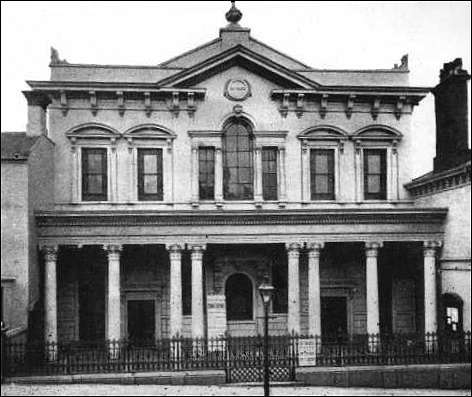|
The
Kilhamites
The two
notable schisms in the Methodist movement which resulted in the formation
of the Methodist New Connexion and the Primitive Methodist Connexion
(later Church) greatly affected the future development of Methodism in the
Potteries.
The first,
which was led by Alexander Kilham, a Methodist minister, found its
strongest support in this area; the second started in Tunstall and the
moorlands to the north and east of Tunstall.
The secession was led by
Alexander Kilham, and resulted from a dispute regarding the position and
rights of the laity. In 1791, Kilham denounced the Methodist conference
for giving too much power to the ministers of the church, at the expense
of the laity. Kilham was expelled from the conference in 1797.
Kilham formed the New Connexion, based around his church in Sheffield. It
thrived, and soon spread across Britain. At its conferences, ministers and
laymen were of equal number, the laymen being chosen by the circuits and
in some cases by guardian representatives elected for life by conference.
Otherwise the doctrines and order of the Connexion were the same as those
of the Wesleyans,
In July 1797, when at the annual
conference of the Methodist Church Kilham was expelled, there were five
Wesleyan Methodist chapels in the Potteries......
....Longton, Fenton, Hanley,
Burslem, and Tunstall, and a regular meeting at Stoke.
Support for the Kilhamite
demands, the rejection of which at this conference resulted in
the formation of the Methodist New Itinerancy or Connexion, had already
been shown by the members of Hanley chapel and this had resulted in the
temporary closing of the chapel by the trustees.
By September 1797, less
than two months after the formation of the Methodist New Connexion, there
were five societies of this church in the Potteries.......
.... Hanley, Burslem,
Longton, Sneyd Green, and Etruria.
Hanley Wesleyan Methodist society was
almost extinguished by the New Connexion group there, while Fenton chapel
went over to the New Connexion. A chapel at Stoke was added in 1806.
Hanley circuit, formed by these societies and those at Newcastle,
Silverdale, and Werrington, became increasingly important until by 1812 it
was the strongest in the whole of the Connexion. The circuit then had over 2,000 members. |

Hanley's Bethesda
Methodist Chapel
built in 1819 and opened in 1820
| From
the outset the New Connexion in Hanley commanded the support of
influential pottery manufacturers, notably the Ridgways of Cauldon Place,
Shelton.
Bethesda Chapel swiftly became the
foremost place of worship in the town. In 1811 the chapel was enlarged
to hold 1,000 and within a few months all the seats were let. By 1819
a new chapel had become necessary, which, erected in that year, seated
2,500. Bethesda was still the principal place of worship in Hanley in
the mid-19th century.
In 1840 one-tenth of the total
membership of the Methodist New Connexion was in the Hanley and
Longton Circuits. |
From: A History of the County of Stafford:
Volume 8 (1963);
Wikipedia

|
![]()
![]()
![]()
![]()
![]()
![]()